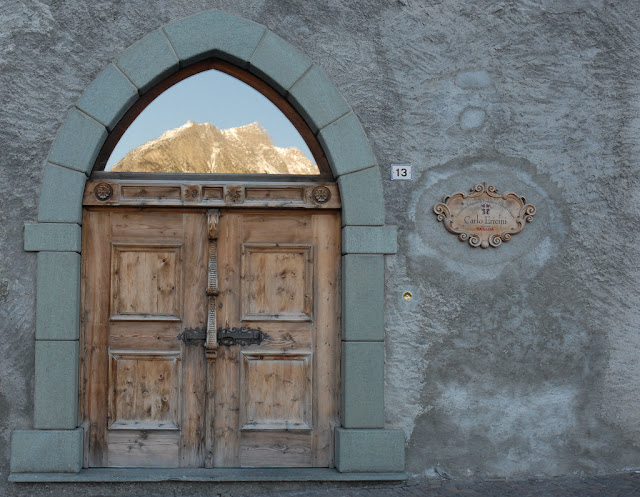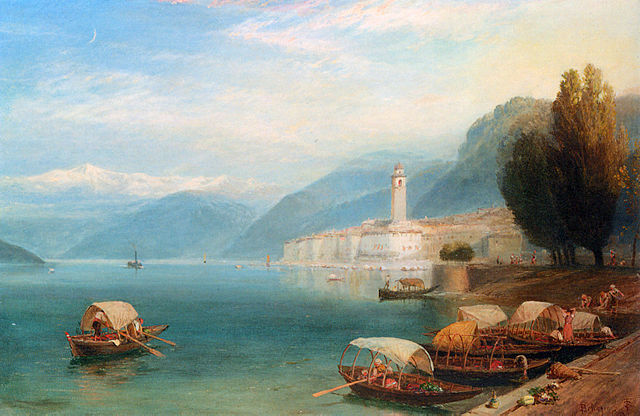Florence - the History
Day 11, 12 & 13 - Exploring Florence

A History of Florence

The First 1000 Years
Founded by Julius Ceaser and settled by the Romans in 59BC in central Italy, it was a perfect stop-off between Rome and the North, and the large Arno River nearby made it perfect for travel and trade. First called "Florentine" which meant "flourishing", it was raided countless times with power shifting among the Goths, Byzantines and Lombards. Construction began on some of the churches and basilicas that still exit today such as San Lorenzo (393 AD) and the Baptistry of San Giovanni dating back to the 7th C.
Year 1000 - 1400's
Year 1000 - 1400's
Often called an open-air museum because of the beauty of its buildings and squares, its
architectural style is a mix of Medieval, Gothic, Renaissance and Romanesque. Most of the buildings, bridges, churches, convents, monasteries and cloisters that we admire today come from this period. Often, the work was started in one century and finished over the course of hundreds of years. Each project was worked on by different architects, engineers, artists or sculptors who got inspiration from the different styles in vogue during their time. An example is the Duomo which was started in 1296 by di Cambio. Then Giotto built the bell tower in 1335, and Brunelleschi added the dome in 1436.
architectural style is a mix of Medieval, Gothic, Renaissance and Romanesque. Most of the buildings, bridges, churches, convents, monasteries and cloisters that we admire today come from this period. Often, the work was started in one century and finished over the course of hundreds of years. Each project was worked on by different architects, engineers, artists or sculptors who got inspiration from the different styles in vogue during their time. An example is the Duomo which was started in 1296 by di Cambio. Then Giotto built the bell tower in 1335, and Brunelleschi added the dome in 1436.
In 1252 the Florentine Florin (il florino d'oro) was coined with John the Baptist, patron Saint of Florence, on one side and the lily, symbol of the city, on the other. The success of the florin was key in the growing accumulated wealth in the city. It would eventually play a part in financing the city's artistic ambitions during Florence's history and the Renaissance.
Florence became an independent republic in 1115. By 1350, around 35,000 people lived in Florence. The main industry was wool trade. Although the wealthy noble families held the power, most of the growth of Florence was due to the merchants. Power struggles ensued between the nobles and the middle-class. Merchants formed guilds to represent their trade and eventually gained administrative power. In 1499, it was the wool guild that asked Michelangelo to make a sculpture of the mythological hero David. The statue represented their freedom and the power they had gained.
In 1348 the Black Death struck. The worst plague in Florence history, it killed about half of the population. During this time of hardship, powerful citizens and successful merchants were able to assert their authority more easily, especially the Medici family. They began what is called the Renaissance, the rebirth of art, literature, music, science, religion, politics and exploration.
Lorenzo il Magnifico
The "House of Medici" was a wealthy family of bankers who also served the Pope. This gave them clout and high levels of authority which they used to commission great works of art. Lorenzo il Magnifico, the greatest art patron of the family, employed geniuses such as Leonardo da Vinci, Michelangelo, Botticelli, Vespucci and Galileo Galilei.
After the Medici period, a Dominican monk named Girolamo Savonarola became an influential authority in Florence. He preached against the extravagant lifestyles of the Medici and the Pope, and he criticized lifestyles that encouraged material riches and decadence. In 1497 Savonarola organized "The Bonfire of the Vanities". Objects associated with loose morals such as cosmetics, erotic writings and non-biblical artworks were burned on a bonfire in Piazza della Signoria. The Pope denounced Savonarola's actions and planned a punishment meant to mirror his bonfire event. Savonarola was burned at the stake in Piazza della Signoria in 1498. The site is marked with a round metal plaque embedded in the stones of the square.
Year 1700 - Today
At the start of the 17thC Florence started to lose its stronghold in Europe as the city's trade, manufacturing and banking were on a decline. The Medici family, who had been restored to power, lost their last family member, leaving no heirs. For a time, the city was ruled from the outside as Tuscany was given to the Lorraine family of a French-Austrian dynasty. For a short period, 1809-1814, Napoleon's sister was the Duchess of Tuscany. In 1859 the Lorraines left Florence and King Vittorio Emanuele became the leader of the Tuscan region.
For a brief period Florence had the honor of being the capital of the kingdom of Italy. The city was modernized to accommodate the king in his new home, the Pitti Palace across from Ponte Vecchio. Florence remained the capital for 6 more years before being replaced by Rome. During World War ll Florence was occupied by the German army for one year. The allies eventually drove them out. As the Germans were being pushed out they blew up the bridges connecting the heart of Florence to the other side of the river to prevent the British troops from following them. Luckily, the Ponte Vecchio was spared.
In 1966 the Arno River overflowed, creating a flood which killed many people, destroyed or damaged famous masterpieces, and left Florence's infrastructure in ruins. Volunteers from all over Italy and Europe came to help, working through mud and sludge to clean the city. They were lovingly called "Angeli di Fango" which translates "Mud Angels". Many buildings have markers on their buildings indicating the high level that the water reached on this day in Florence's history.
On May 27, 1993, outside the Uffizi museum, in an act of terrorism, a car bomb exploded killing 5 people, wounding many others and damaging historic buildings and artwork. An olive tree grows there now to represent life that goes on. The interest in the history and culture of Florence and the Renaissance is as strong as ever.
Information for this history was taken in part from
"A Brief History of Florence"
at italianlegacy.com
Photo Credits in order:
1. https://en.wikipedia.org/wiki/Florence#/media/File:Colored_woodcut_town_view_of_Florence.jpg
2. https://en.wikipedia.org/wiki/Florin#/media/File:Fiorino_1347.jpg
3. https://pixabay.com/images/id-3540759/
4. https://commons.wikimedia.org/wiki/Category:Lorenzo_de%27_Medici#/media/File:Lorenzo_de_Medici.jpg
5. https://commons.wikimedia.org/wiki/File:Hanging_and_burning_of_Girolamo_Savonarola_in_Florence.jpg
Photo Credits in order:
1. https://en.wikipedia.org/wiki/Florence#/media/File:Colored_woodcut_town_view_of_Florence.jpg
2. https://en.wikipedia.org/wiki/Florin#/media/File:Fiorino_1347.jpg
3. https://pixabay.com/images/id-3540759/
4. https://commons.wikimedia.org/wiki/Category:Lorenzo_de%27_Medici#/media/File:Lorenzo_de_Medici.jpg
5. https://commons.wikimedia.org/wiki/File:Hanging_and_burning_of_Girolamo_Savonarola_in_Florence.jpg
Photo credits in order:







Comments
Post a Comment